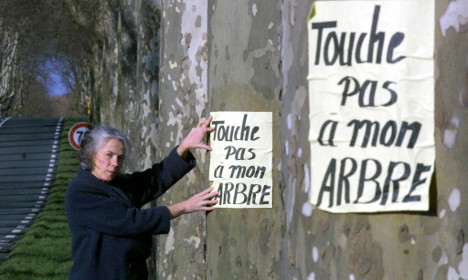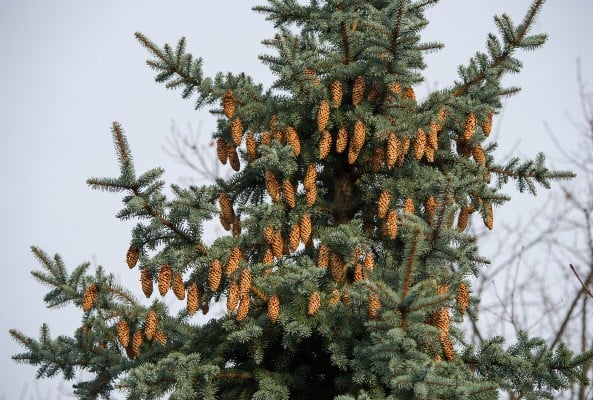With the French government under pressure to bring down the number of road deaths fears are growing that a famous feature of the French countryside could be axed.
Around 10,000 “plane trees” or sycamores that adorn hundreds of rural roads for miles up on miles and that are believed to date back to Napoleon could be felled if the government decides road safety must come first.
Interior Minister Bernard Cazeneuve has triggered concern among conservationists when he asked local authorities to undertake a “safety audit” and assess potential hazards from roadside infrastructure.
Although no mention of trees has directly been made, there are fears among conservation groups the famed trees could be chopped down.
“For the moment, this is just an audit but we remain on the alert. We have to wait and see what will result of it,” Chantal Fauché, president of the association for the protection of trees on road sides (Asppar), told the newspaper Le Figaro.
“Admittedly, trees alongside the roads are aggravating factors for accidents but the plan to reduce the number of deaths on the road each year needs to tackle the causes of accidents.
“These are above all alcohol, speed and behaviour. Chopping down trees is a simple political choice, which also enables to generate saving costs from maintenance,” she added.

(Chantal Fauché pictured in 2001, during her campaign to protect the plane trees. Photo: AFP)
Nevertheless those calling for the government to take the axe to the trees point to some concerning statistics.
In 2013, 326 people were killed on the road after hitting a tree, which amounted to 10 percent of people who died in a car accident.
More broadly, the same year, in 36 percent of cases when people died in road accidents, there were fixed obstacles such as a tree, a parked car or a median strip involved.
The debate about the danger of trees on road sides is long-standing one and it’s not the first time conservationists have become concerned.
In 2001, Asppar spoke out against the then claims of the Agricultural minister Jean Glavany who said that “plane trees along side roads are a public danger”.
Those words have been backed by vigilante bikers, who declared war on roadside trees the same year. The group calling itself the Anti-Plane Tree Commando sawed down dozens of trees because they were “sick to the teeth” of seeing motorcyclists or other bikers killed y smashing into one of the trees.
However in 2006, a report concluded that trees on road sides have a positive effect on motorists. It showed trees clearly mark out the road, are useful pointers for security distance between cars and give a sentiment of speed, which makes people slow down.
The first road trees were planted by Henri III, King of France in the 16th century in order to restore the French woods which had been cleared out during the Middle Ages.
Napoléon continued to plant sycamores alongside the roads of his war campaigns as a reserve of wood in the winter and provider of shadow for his troops in the summer.
By Chloé Farand


 Please whitelist us to continue reading.
Please whitelist us to continue reading.
Member comments